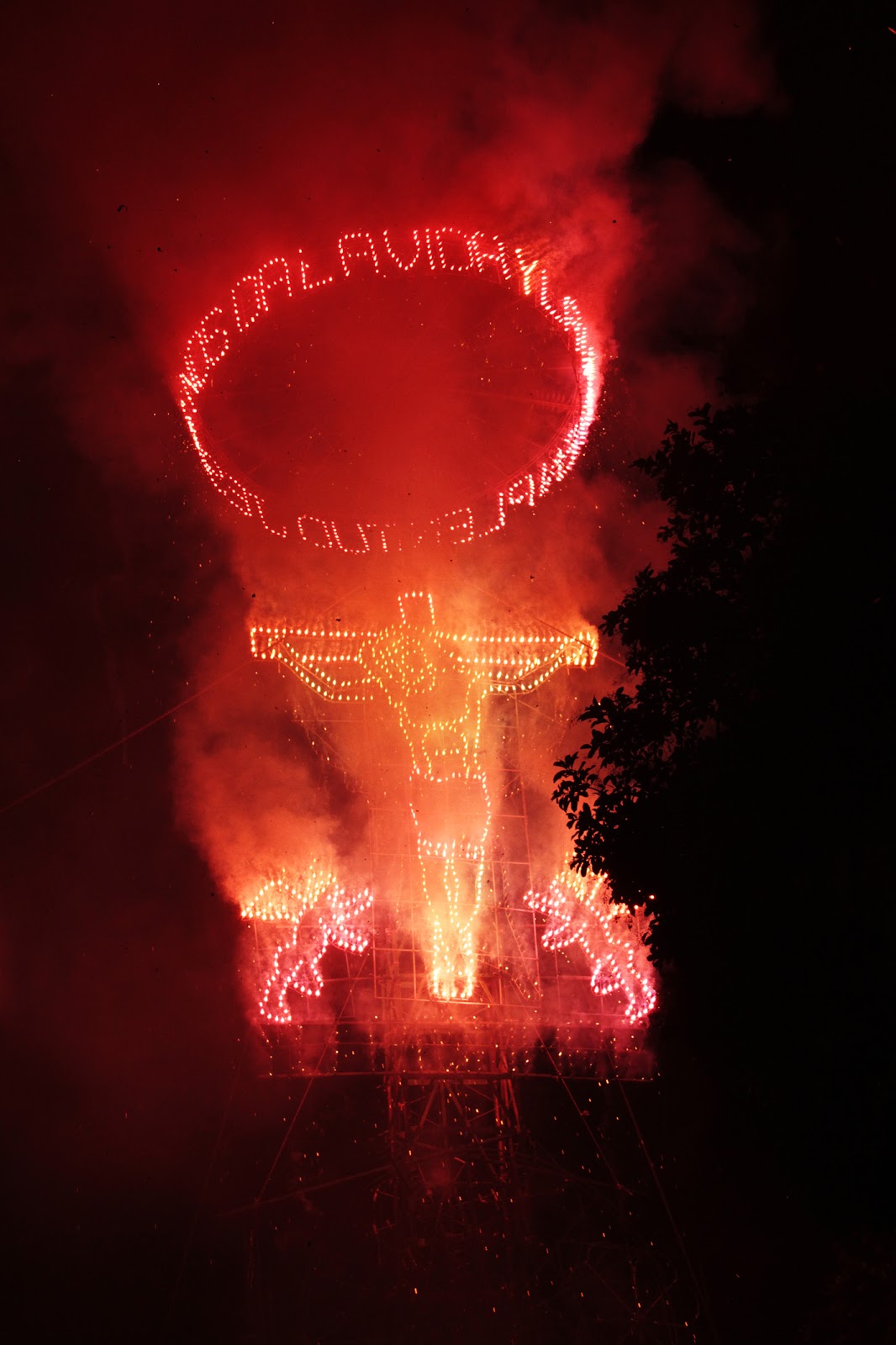En este tiempo, los primeros pobladores españoles de la ciudad establecieron sitios para el culto cristiano. Uno de ellos fue la ermita de la Santa Veracruz, ubicada en este mismo lugar que fuera un importante centro prehispánico. La ermita sustituyó al gran Teocalli de Huaxyacac, donde la ciudad indígena celebraba, cada mes de julio, la gran Fiesta de los Señores en la que se realizaba el sacrificio de una doncella en honor a Centeótl, Diosa del Maíz y la Agricultura. La festividad se cristianizó y se transformó en la actual fiesta de la Guelaguetza o Lunes del Cerro, la cual coincide con las fiestas en honor a la Virgen del Carmen.
 |
| El hombre de la publicidad |
El convento, hacia 1856, tras la secularización de las propiedades de la iglesia, pasó a pertenecer al Gobierno Federal; por estos tiempos fue usado para cárcel y cuartel. En 1889 lo adquirió el obispo Eulogio G. Gillow, quien lo restauró para instalar la residencia episcopal; también fue ocupado para un colegio seminario. En 1910 fue escuela nocturna para obreros y escuela primaria superior.
 |
| La Calenda para el Dios de Paradura del Niño |
En 1925 pasó nuevamente a ser propiedad federal. Actualmente, en lo que fue el claustro, están instaladas las oficinas del Registro Civil del estado. En sus demás anexos funcionan centros escolares y oficinas federales. El templo se distingue, respecto a los demás templos de Oaxaca, por su pórtico, cuya función es preparar el ingreso a la nave principal.
En el primer domingo de enero es el Dios de Paradura del Niño (Epifanía). Se celebra en todas las iglesias católicas, pero hay una especial Calenda (procesión) en la iglesia del Carmen Alto. La procesión discurre por el centro de la ciudad y el zócalo capitalino y termina en la iglesia. Después de misas dulces se dan a los niños. Todo termina con una exhibición de fuegos artificiales en el Plazuela de Carmen Alto en el lado sur de la iglesia.
When the Spaniards arrived in Huaxyacac they found on this site, a Aztec temple devoted to Centeotl the deity of the corn. It should be remembered that the city was founded by the Aztecs in the year of 1486 and they had built a military garrison on the Hill of the Fortin, and on the lower slopes they established a small Aztec village for the families of the soldiers.
At this time, the first Spanish settlers of the city established sites for Christian worship. One of them was the chapel of Santa Veracruz, located in the same place that was an important pre-hispanic center. The chapel replaced the great Teocalli of Huaxyacac, where each month of July, the indigenous city had celebrated the great Feast of the lords in which there was the sacrifice of a maiden in honor of Centeótl, the goddess of corn and agriculture. The festival was Christianized and transformed in the current holiday of the Guelaguetza or Monday of the Hill, which coincides with the holidays which honor the Virgin of Carmen.
The Spaniards destroyed the pyramid Centeotl and with its stone built a small chapel dedicated to the Santa Vera Cruz. But in the year of 1769, the Carmelite fathers constructed the temple and the convent called 'Carmen Alto', at that time that it was exclusive for Spanish, the other temple called 'Carmen Bajo' was for the mestizos and mulattoes; indigenous peoples had their own temples in the southern part of the city. In the three hundred years of colonial rule the caste system was fierce and very strict.
The convent, about 1856 after the secularization of the properties of the church, passed to the Federal Government and by these times it was occupied by a jail and barracks. In 1889 the bishop Eulogio G acquired and restored it, installing the Episcopal residence. It was also was occupied by a school in 1910 for workers in the evening and a as top primary school.
In 1925 it became again a federal property. Currently, in what was the cloister, are the offices of the Civil Registry. In its other annexes operate schools and federal offices. The temple is distinguished, in relation to other temples of Oaxaca, by its portico, whose function is to prepare for the entry to the main nave.
 |
| Girls want to have fun too |
 |
| Note the tree and all the cinders in the air; and wear eye projection and old clothes. |
 |
 |
| An angel after being launched |

My Picasa web album is here and there are other fireworks pictures, some from Carmen Alto in previous years here.











No comments:
Post a Comment